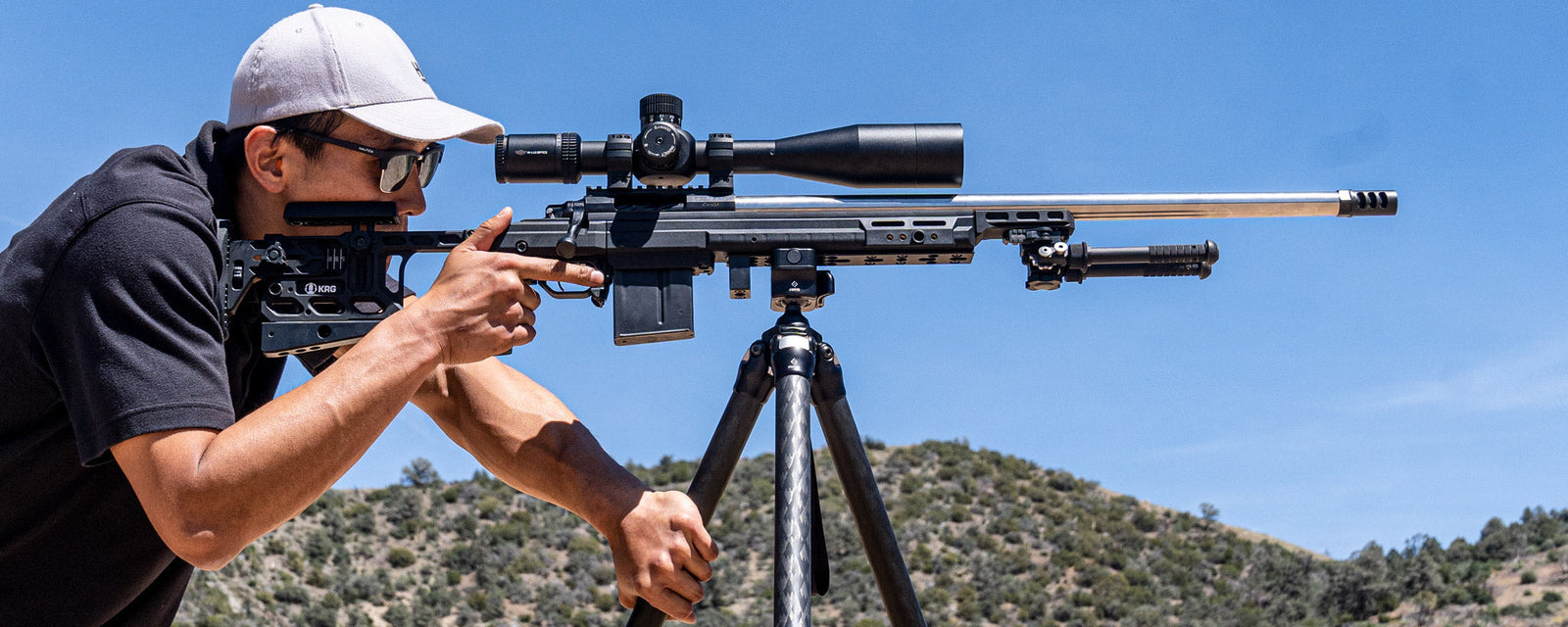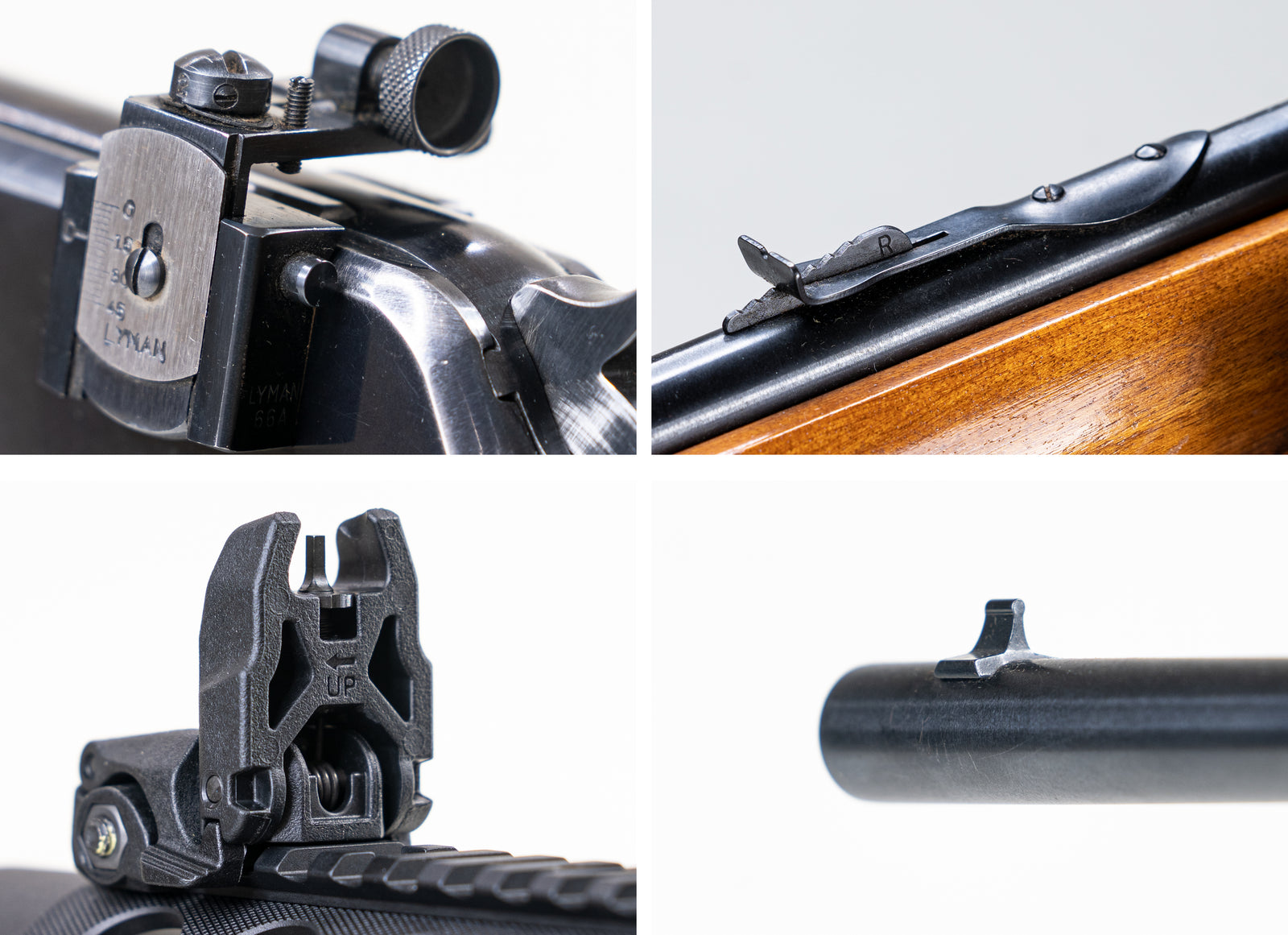Wind blows.
The question is - how much?
You could carry a wind-meter with you all the time to verify the wind next to you. You could go to places where wind-socks and flags could tell you the speed. However, the speed down at your target might be different. There may be no wind flags installed in your neck of the woods. If you’re looking for other, more natural visual cues, look no further!
Visual Cues
|
Wind Speed mph |
Trees |
Grass/Shrubs/loose leaves |
Dirt (ground) |
Mirage |
Other Tools |
|
<1 |
No movement |
No movement |
No movement |
Rises straight up |
Sea like a mirror Smoke rises vertically |
|
1-3 |
Lightest motion of leaves |
Light movement of grasses, especially tall grasses |
Mirage bends slightly in direction of wind |
Wind may be felt on bare arms Ripples like scales appear on water, no white crests Smoke shows direction of wind |
|
|
4-7 |
Leaves rustle Wind direction apparent |
Grasses in obvious motion Tall grasses ‘thrown’ to the sides |
Mirage bends at 45 degree angle |
Wind felt on face Wind vanes move Crests on small waves have a glassy appearance and do not break |
|
|
8-12 |
Leaves and twigs in constant motion Mature leaves may flip over on windy side of tree Twigs bend with direction of wind |
Dry leaves move along |
Low threshold for dry dirt, sand to begin lifting off ground |
Mirage flattens at 10mph but remains visible, disappears after 12mph |
Wind extends a ‘light flag’ |
|
13-18 |
Small branches move Tree may form ‘sudden lashes’ with windy-side branches |
Wind raises dust, loose paper |
Mirage is completely washed out |
Waves form with somewhat frequent white caps |
|
|
19-24 |
Small trees begin to sway |
Crested wavelets form on inland waters, many white caps Chance of some spray from waves |
|||
|
25-31 |
Large branches in motion |
Whistling heard from telephone wires Umbrella used with difficulty |
SWOP Protocol
According to Meteorologists, this is a good set of air tells to look out for: From the SWOP Observers, (Significant Weather Observer Program)
|
Wind Speed (mph) |
Sign |
Wind description |
|
<1 |
Smoke rises vertically |
Calm |
|
1-3 |
Smoke shows direction of wind Wind vanes do not move |
Light air |
|
4-7 |
Wind felt on face Leaves rustle Wind vanes move |
Light breeze |
|
8-12 |
Leaves and twigs in constant motion Wind extends light flag |
Gentle breeze |
|
13-18 |
Wind raises dust, loose paper Small branches move |
Moderate |
|
19-24 |
Small trees begin to sway Crested wavelets form on inland waters |
Fresh |
|
25-31 |
Large branches in motion Whistling heard in telephone wires Umbrellas used with difficulty |
Strong |
After this, the descriptions get into intense storms - difficulty walking, mobile homes shake, branches break off of trees. I think we can agree for now that if you’re seeing that much wind, it’ll be pretty variable and requires “a whole heck of a lot” of wind holdover. Best to head inside for now and get a hot cup of coffee.
Other Techniques
A rough estimate technique:
- Hold a few blades of grass, a 6-8” ribbon, or some loose dirt.
- Extend your arm out at 90 degrees, straight to the side.
- Let the stuff fall.
- Estimate the angle formed from your hand, a point directly below it on the ground, and where your ‘indicator’ fell.
- For example: if you’re holding your arm at 5’ and let the grass fall, and it falls 5’ to the side, that’s a 45 degree angle.
- Divide the angle by 4 to the get the wind speed in mph.
- Taking that 45 degree angle again - the wind would be about 11 mph.
Mirage
What is a mirage?
If you’ve ever been outside on a hot day, you might’ve noticed a bit of squiggly air rising off a hot surface. It’s even easier to see if you’re close to the surface and looking parallel. Think of the mirage rising off the top of your car, or over the asphalt when you’re looking at the upper curve of a hill. Or, of course, on the horizon when you’re stuck in the desert.
The sun hits a surface, and that surface starts heating up. Hot air, lower in density than the air around it, rises. However, there’s not a whole lot of hot enough air to make a thick sheet (in most cases). Cooler air rains down from above that hot patch, pushing in between fluxes of hot air to create turbulence. If all the air is the same density, light refracts in the same way. It’s invisible. What we can see most easily (or at all) is the turbulence.
What we’re looking at, as shooters, is not entirely the full mirage. A true mirage refracts and warps the light bouncing off a distant object - flipping it upside down in the meanwhile. And seeing as the sky is often the biggest, brightest distant ‘object’ on any given day, a flipped over ‘landscape picture’ will make the sky look like a puddle. Yes, you’re technically seeing water in the desert.
Looking at a target through a scope, you may notice the air ‘wobbling’ in vertical channels. This is the turbulence, and this is what we’re paying attention to. In between you and the target (which should not appear upside down, unless you’re incredibly far away) is a big mess of mixing air, refracting light from the background a little differently in each density.
All this stuff is just a hot mess of air. Normally, it’s going to want to do all this exchanging in a straight up-down motion. Unfortunately for air, and us shooters, wind likes to come in from the side and muss things up.
Mirage is easiest to see when there’s a clear difference between the temperature of the air and the temperature of the ground. So - looking out over a field of bushes may not give you a clear mirage, because the sunlight is being eaten up by all those plants and not heating the dirt. However, looking out over a clear patch of dirt or sand (or asphalt) will help you out.





Leave a comment (all fields required)